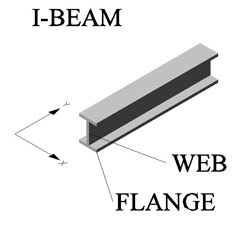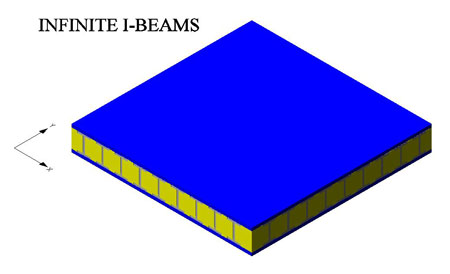One of the first markets to take advantage of sandwich panels was the aerospace industry. Lightweight honeycomb cores are utilized in airplanes main bodies, the floors, and bulkhead interior panels. Beyond aerospace, advanced honeycomb, balsa, and foam cores are used significantly in the marine, wind energy, construction, and various transportation industries.
Sandwich panel cores are low in density and lightweight; but when combined with reinforcing fibers and resin, they become incredibly light, stiff, and strong structures. With mixes of lightweight cores, composite skins, and adhering methods, new sandwich structures are constantly being developed for a myriad of needs.
Today, an endless amount of cores are available from major companies such as Diab, Baltec, Rohacell, or Dow. Composite skin combinations are virtually endless as well. Thus, the first step in selecting an appropriate sandwich panel is analyzing the necessary demands. The quantity of sandwich necessary must be estimated as well to help identify the best manufacturing method. Selecting the appropriate sandwich structure, core, skins, adhesive, and manufacturing method requires a multifaceted approach to create a product that meets all engineering demands.
Why A Sandwich?
Long ago engineers realized that by adding a core to a material, the strength and stiffness could be dramatically increased with very little added weight. Cores, in comparison to the additional structural value they add, are extremely cost effective. With a sandwich, less material is required than with a solid structure.
A sandwich panel acts much like an endless I-beam; where the skins are separated at a constant distance to provide stiffness. Like an I-beam, as the skins become further apart, the structure gains more proportional stiffness. It is estimated that by increasing the sandwich thickness by two, the panel will become 12 times as stiff and six times as strong. The advantage of a sandwich is that little weight is added when increasing the thickness.
Another advantage of a sandwich panel is that the core helps distribute and absorb impact. In common cores such as balsa or foam, the skin is in constant contact with the entire core; thus during an impact, the force is distributed over a wider area. However, this is not true for all sandwich panels. For example, honeycomb, although often stiffer and stronger, has much lower impact resistance as the skin is not in full contact with the honeycomb core. In a sandwich panel, the compression strength of the core helps prevent the sandwich from wrinkling, delaminating, or buckling; all common methods of failure. As well, the core’s shear properties help the sandwich panels’ stiffness and in effect, prevent the skins from “sliding” when bending force is applied.
Compliments of Sandwich Panels (dot org)


